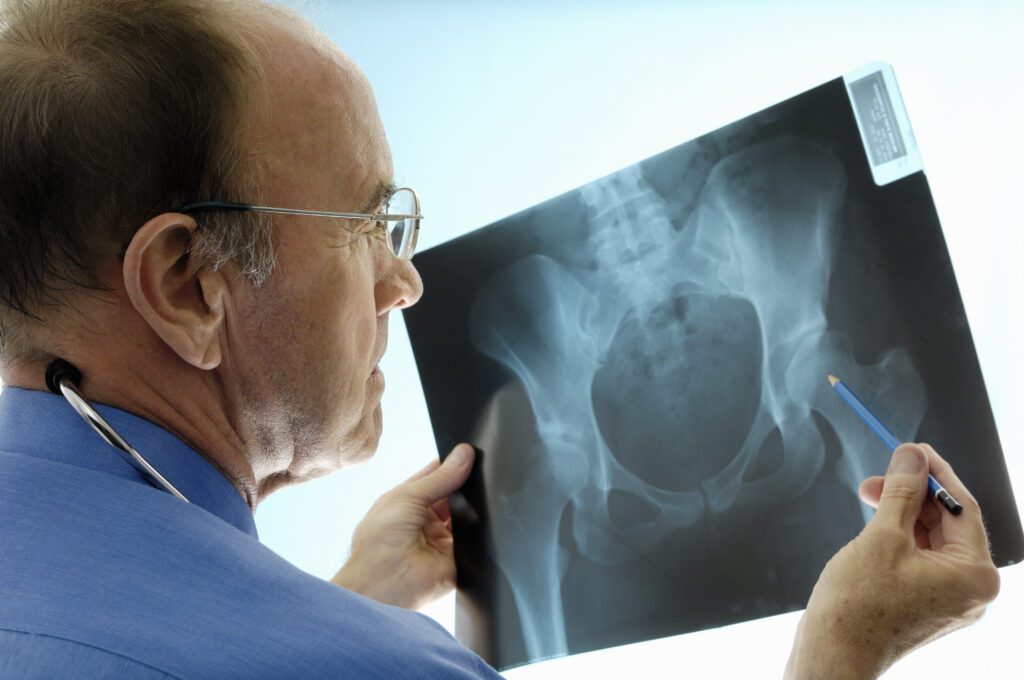Osteoarthritis Can Be a Real Pain in the Joint
It’s common for most people to experience pain from time to time, especially as we get older; but if you’re experiencing pain and stiffness in your joints, like your hands or knees, then you may be experiencing osteoarthritis. It’s the most common type of arthritis, but it’s not something to accept as a normal part of aging. Early detection means treatment and interventions will be more likely to successfully halt and/or treat the progression of the disease. Take our quiz on osteoarthritis and learn treatment options for your health and quality of life.
1. Which of the following is the definition of osteoarthritis
A. An inflammatory disease in which the tissues in the joint become inflamed
B. A degenerative joint disease in which the tissues in the joint break down over time
C. An infectious disease in which the tissues in the joint become infected
D. A deficiency disease in which the tissues are lacking in certain vitamins and minerals
2. True or false? Researchers do not know what triggers or starts the breakdown of the tissues in the joint in osteoarthritis.
3. People with osteoarthritis usually have joint pain and, after rest or inactivity, stiffness. What are the most commonly affected joints?
A. Hands, usually the ends of the fingers and at the base and ends of the thumbs
B. Knees and hips
C. Neck and lower back
D. All of the above
4. True or false? Osteoarthritis affects each person differently. For some people, osteoarthritis is relatively mild and does not affect day-to-day activities. For others, it causes significant pain and disability.
5. What areas can be damaged from the tissues in the joint breaking down due to osteoarthritis?
A. Cartilage, the tissue that covers the ends where two bones meet to form a joint, such as the meniscus in the knee
B. Tendons and ligaments
C. Synovium, the lining of the joint
D. Bone
E. All of the above
6. Anyone can get osteoarthritis, but which of the following groups is more likely to get osteoarthritis?
A. Women are more likely than men to have osteoarthritis, especially after menopause.
B. Those older than 50
C. Younger people due to a joint injury, abnormal joint structure, or genetic defect in joint cartilage
D. All of the above
7. The symptoms of osteoarthritis usually begin slowly and start with one or a few joints. Which of the following are common symptoms of osteoarthritis?
A. Pain when using the joint, which may improve with rest
B. Joint stiffness, usually lasting less than 30 minutes
C. Joint changes, like swelling in and around the joint, that can limit joint movement and change your ability to use the joint.
D. Feeling that the joint is loose or unstable.
E. All of the above
8. True or false? Osteoarthritis occurs because of wear and tear on the joints.
9. In addition to aging and being a woman, which of the following factors can increase the likelihood of developing osteoarthritis?
A. Being overweight or obese
B. Having a history of injury or surgery to a joint
C. Overuse from repetitive movements of the joint
D. Joints that do not form correctly or a family history of osteoarthritis
E. All of the above
10. There are a number of tests, images, and exams that are needed to diagnose osteoarthritis. Which of the following are treatment options?
A. Massage and exercise, including range-of-motion and stretching activities, strengthening exercises, balance and agility exercises, and low-impact exercises
B. Managing your weight and using doctor-prescribed braces or orthotics
C. Medications like oral pain relievers and anti-inflammatory medications; topical creams, rubs, or sprays that you apply to relieve pain; corticosteroids; hyaluronic acid substitutes (viscosupplements); and selective serotonin and norepinephrine reuptake inhibitors
D. Surgery to remove pieces of bone and/or to replace the joint
E. All of the above
compiled by ERIKA ALDRICH / Resources: Information provided by The NIH’s National Institute of Arthritis and Musculoskeletal and Skin Diseases.
ANSWERS
- B. A degenerative joint disease
- True
- D. All of the above
- True
- E. All of the above
- D. All of the above
- E. All of the above
- False. Osteoarthritis is NOT caused by wear and tear in the joints.
- E. All of the above
- E. All of the above
